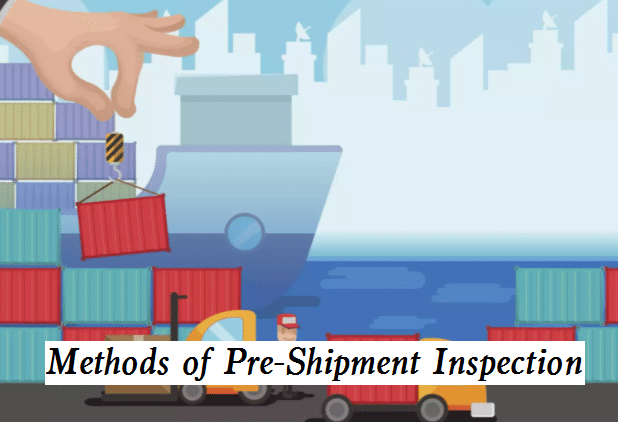The pre-shipment inspection is important in the quality management of exporting goods. What are the different ways of PSI inspection and who performs that?

Different Methods of Pre-Shipment Inspection
Pre-shipment inspection (PSI) is a quality control process that helps importers ensure that the goods they are importing meet their quality standards and specifications. There are five methods of pre-shipment inspection, including:
1) Full inspection: In this method, the entire shipment is inspected to ensure that it meets the importer’s quality requirements. This involves checking the quantity, packaging, labeling, and physical condition of the goods.
2) Random sampling: This method involves taking a representative sample from the shipment and inspecting it according to the importer’s quality requirements. If the sample meets the requirements, then the entire shipment is assumed to be of good quality.
3) Statistical sampling: This method involves using statistical techniques to select a sample from the shipment. The sample is inspected according to the importer’s quality requirements, and the results are used to make statistical inferences about the quality of the entire shipment.
4) Spot checking: In this method, random items are checked from the shipment to ensure that they meet the importer’s quality requirements. The items are chosen at random, and the inspection is done quickly to avoid delaying the shipment.
5) Production inspection: This method involves inspecting the goods during the production process to ensure that they meet the importer’s quality requirements. This can be done at the factory or at a third-party inspection facility.
Who Performs Pre-Shipment Inspection
Pre-shipment inspections (PSI) are typically performed by third-party inspection agencies that specialize in quality control and assurance. These agencies are independent of the buyer and the seller and are hired by the importer to inspect the goods before they are shipped. The inspection agencies have trained and experienced inspectors who are familiar with the importer’s quality standards and specifications. They conduct inspections according to international standards such as ISO 9000, ISO 2859, and other relevant industry standards. The inspection agencies use a range of inspection techniques, such as visual inspections, measurements, testing, and sampling, to ensure that the goods meet the importer’s requirements. After the inspection is completed, the agency provides a detailed report to the importer, which includes the findings of the inspection, any defects or non-conformities found, and recommendations for corrective actions. The importer can use this information to make informed decisions about the shipment and to ensure that the goods meet their quality standards. IPQCCO offers a pre-shipment inspection service to make you not worry about the products to be exported or imported.
Is Pre-Shipment Inspection Mandatory?
Pre-shipment inspection (PSI) is mandatory in some countries, as a requirement for the importation of certain goods. However, in other countries, it may be optional and left to the discretion of the importer. The decision to conduct a pre-shipment inspection is typically based on the importer’s quality requirements, the nature of the goods being imported, and the importing country’s regulations.
In some cases, the pre-shipment inspection may be mandatory to comply with regulatory requirements and to ensure that the goods meet safety, health, and environmental standards. In other cases, the importer may choose to conduct a pre-shipment inspection to verify the quality of the goods and to avoid any disputes with the supplier.
Even when the pre-shipment inspection is not mandatory, it is generally recommended for importers to ensure that the goods they are importing meet their quality standards and specifications.